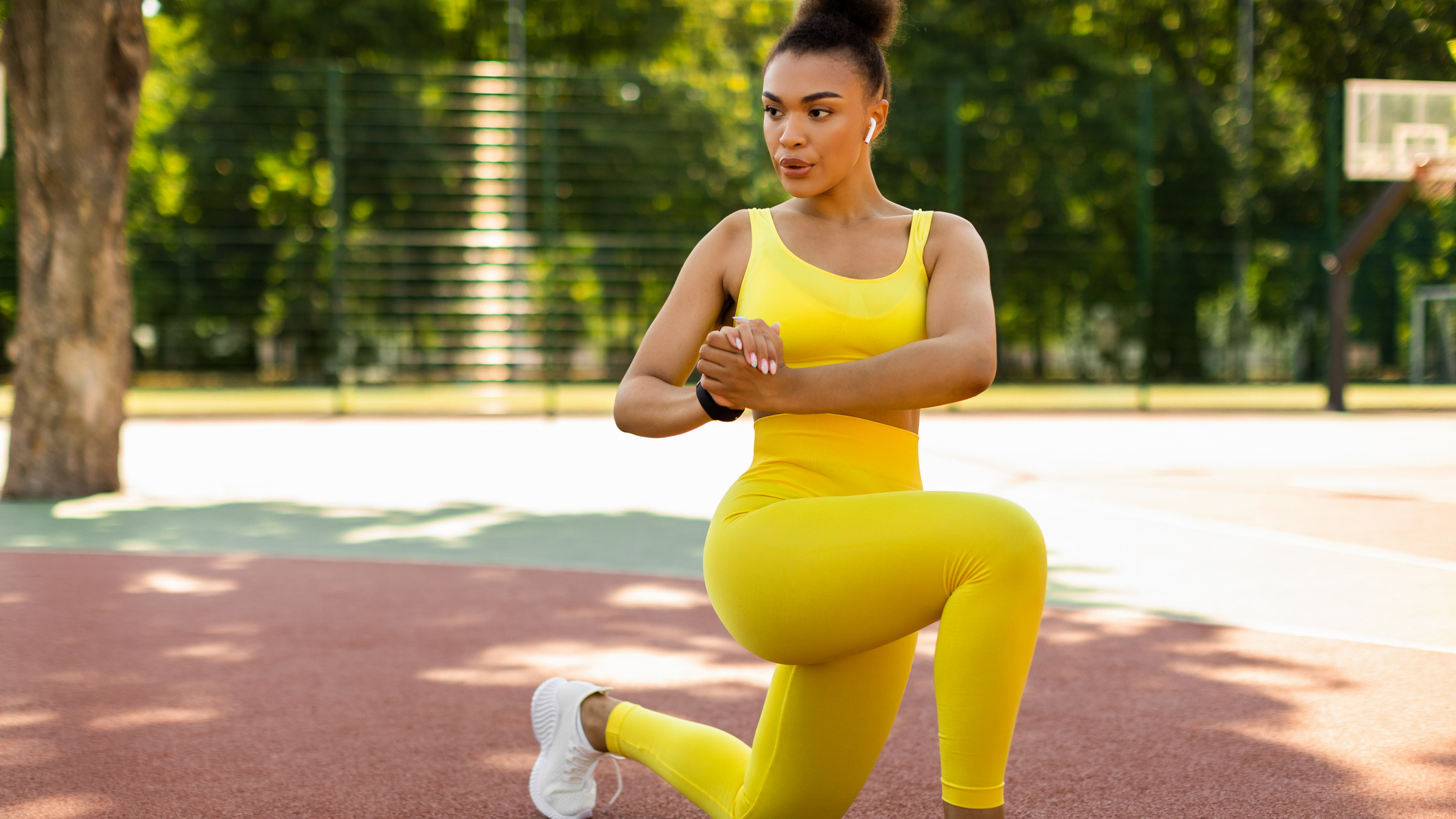
There’s no single exercise that’s going to revolutionize your workouts—consistency and progressive training remain the best routes to success. But there are some fundamental moves you should practice regularly if you want to build a fit and functional body.
The lunge with rotation is one such exercise, and a favorite of National Academy of Sports Medicine (NASM) certified personal trainer Susane Pata.
"Especially if you’re newer to training. I think starting with a multiplanar [working multiple planes of motion at once] bodyweight movement like this one is the way to create longevity in the game," she says. "Make your training accessible, and make it long-lasting."
How to do the lunge with rotation
- Stand with your feet roughly hip-width apart.
- Keeping your torso upright and your feet hip-width apart, step forward with your right foot. Lower yourself into a lunge position, with your left knee just above the floor and both knees forming roughly a right angle.
- As you do this, reach your arms forward so they’re parallel with the ground, clasp your hands together, and rotate your torso 90° towards your lead leg.
- Reverse this motion to return to the starting position, then repeat on the other leg.
Benefits of the lunge with rotation
A lunge is a fundamental movement pattern that we do every day. By adding weight to this move, you’re strengthening the muscles and tissues involved, building robustness, functional strength and resilience against injury.
"Another benefit is that it’s a unilateral exercise," Pata says. This means that you’re working one side of your body at a time. "Unilateral exercises are so important, and if you haven’t been adding them to your regimen then you should."
There are many benefits of unilateral exercises, including helping you to identify and address muscular imbalances between the right and left sides of your body, developing your balance and coordination, and building transferable strength.
But why add the rotation? Because that’s what makes this a multiplanar move. The body works in three planes of motion; sagittal (up, down, forwards and backward), frontal (side-to-side) and transverse (rotational).
The lunge is predominantly a sagittal movement, but adding a simultaneous twist incorporates the often-overlooked transverse plane.
"Multiplanar training [can help you become] resilient and durable in everyday life," Pata says. "If you’re running for a bus, or you turn around really quickly to lock a door because you forgot—these are everyday activities which sometimes people are not prepared for."
By training with multiplanar movements, you’re teaching your body to move in a range of ways, developing the strength and stability necessary to do so safely. This translates to both everyday activities and sports too, like tennis and pickleball.
Pata suggests that you master the bodyweight version of the lunge with rotation before adding in a weight, but once you’ve got the move nailed you can try gripping a dumbbell to your chest during the exercise or straightening your arms and holding it out in front of you for an extra challenge.







